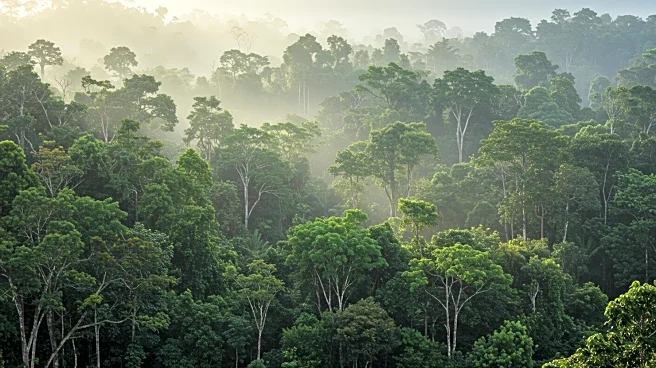Rapid Read • 7 min read
A study from UC Riverside, published in npj Climate and Atmospheric Science, has identified tropical regions as the most effective areas for tree planting to combat climate change. The research emphasizes that trees in warm, wet regions provide significant cooling effects by pulling carbon dioxide from the atmosphere and releasing water vapor. This process, known as evapotranspiration, cools the air and the trees themselves. The study found that tropical tree planting offers the strongest climate benefits, while higher latitude planting may have a slight heating effect.
AD
The study underscores the importance of strategic tree planting in mitigating climate change. By focusing efforts in tropical regions, where trees grow year-round, the cooling effects are maximized, providing a more substantial impact on global temperatures. This research informs policymakers and environmentalists about the most effective locations for reforestation projects, potentially guiding future climate strategies. The findings also highlight the role of trees in fire suppression and ecosystem preservation, offering additional benefits beyond carbon sequestration.
Researchers plan to further explore the carbon sequestration effects of tree planting, aiming to provide more accurate estimates of its global cooling impact. Future studies may simulate the interactive effects of new forests on both physical and carbon cycles, enhancing understanding of their role in climate regulation. Policymakers and environmental groups may use these insights to prioritize reforestation efforts in tropical regions, optimizing climate benefits while considering local ecological and social factors.
The study raises questions about the balance between tree planting and land use, emphasizing the need for a 'Goldilocks zone' of trees in each region. It highlights the complexity of climate solutions, where local conditions and ecological dynamics must be considered. The research also points to the potential for trees to influence weather patterns, suggesting broader implications for climate modeling and prediction.
AD
More Stories You Might Enjoy










